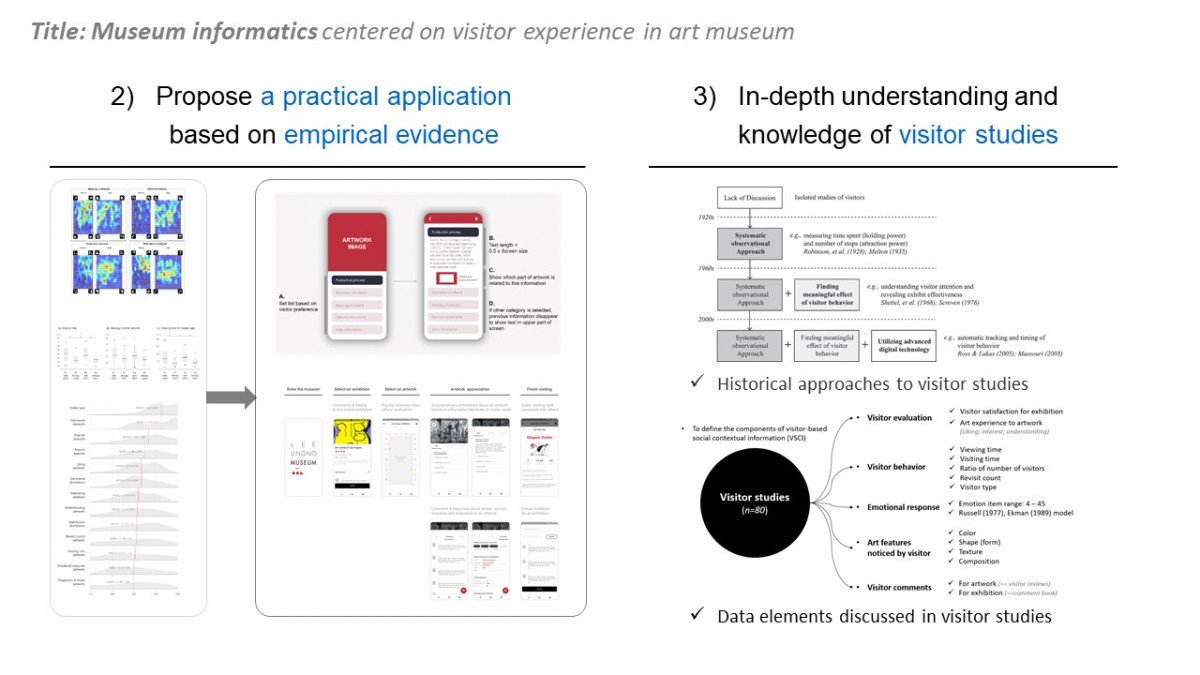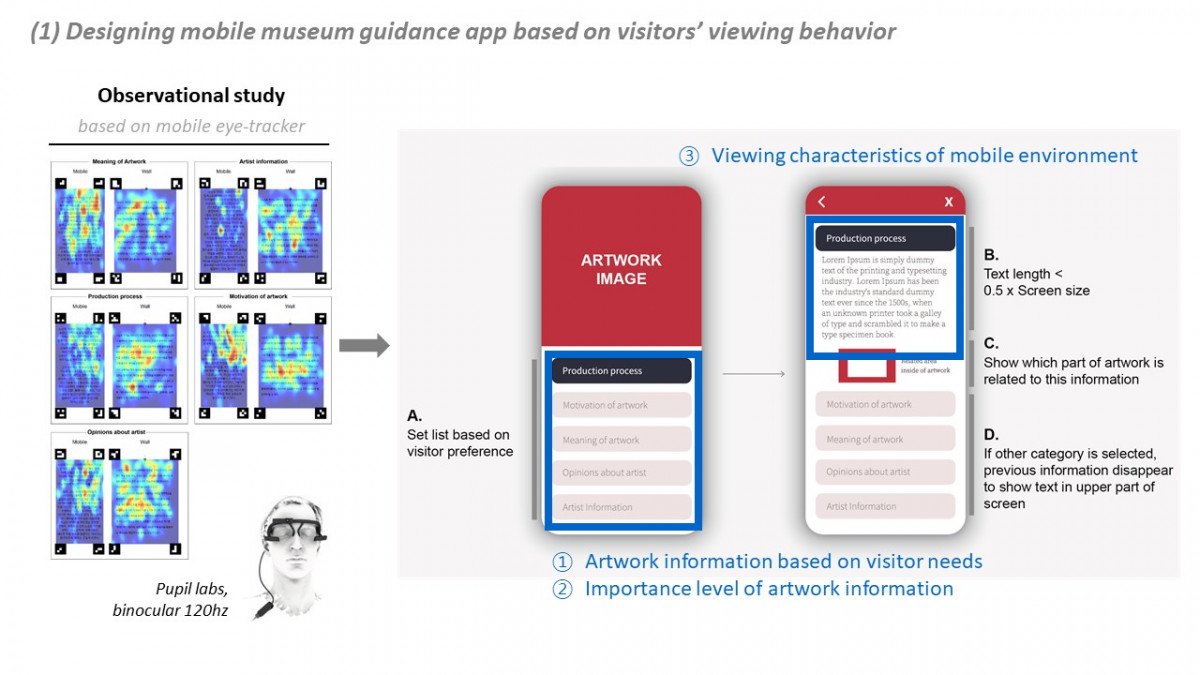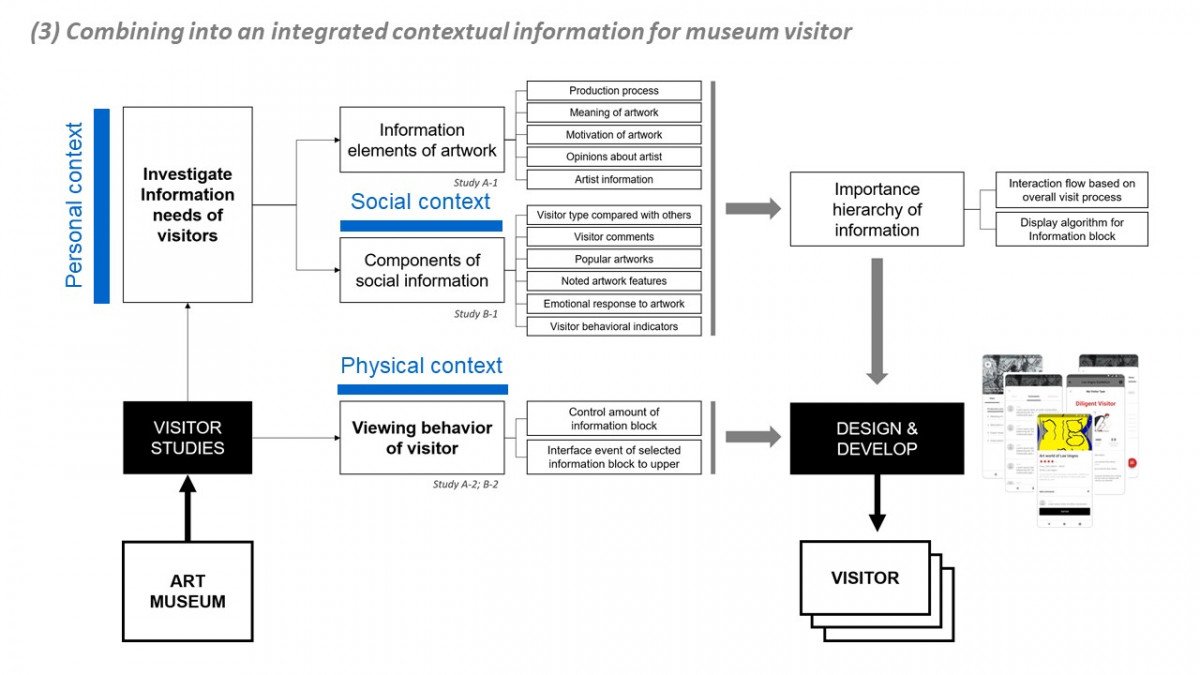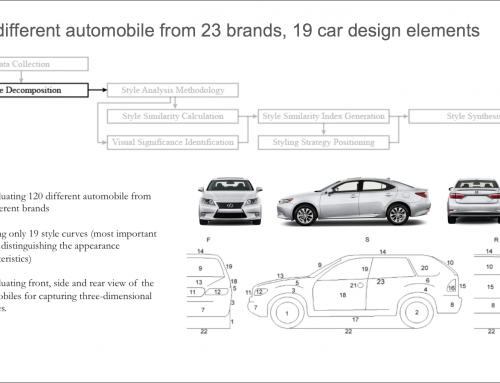Project Description
Museum informatics centered on visitor experience in Art museum
Visitor-centered approaches have been widely discussed in the museum experience research field. One notable approach was suggested by Falk and Dierking, who defined museum visitor experience as having a physical, personal, and social context. Many studies have been conducted based on this approach, yet only a few have focused on the information provided by art museums based on the integrated contexts of the visitor experience. To fill this gap, the first study was focused on the personal visitor’s information needs and viewing behavioral features according to the information delivery media as physical context. To do that, first, an online survey was conducted to grasp the types of information that visitors wanted to know, and five elements were obtained. Second, eye-tracking experiments were performed with semi-structured interviews. The information delivery media was set as follows: wall and mobile texts as commonly used in art museums. The results showed that patterns of eye movement of visitors were different according to the information delivery media. The second study investigated the influence of social contextual information contributed by individual visitors about their art museum experience. This data, called “visitor-based social contextual information” (VSCI), is the social information individuals provide—feedback, reactions, or behavioral data—that can be applied to facilitate interactions in a social context. The study included three stages: First, an online survey was conducted for a preliminary investigation of visitors’ requirements for VSCI. Second, a mobile application prototype was developed. Finally, the prototype was used in an experiment to investigate the influence of VSCI on museum experience based on visitors’ behaviors and reactions. The results indicate that VSCI has a positive impact on visitors’ museum experience.
By synthesizing the above studies, an integrated framework for museum informatics centered on the visitor experience was developed. As a result of expert evaluation, this research confirmed the high potential to enhance visitors’ museum experience. In addition, practical feedback for commercialization in actual art museums was discussed, and a deep learning-based predictive model for art museum experts was presented. Based on the suggested research of museum informatics, museums can develop information content based on a visitor-centered approach, and providing the integrated information enables visitors to experience the exhibition from new perspectives.
[Full]









